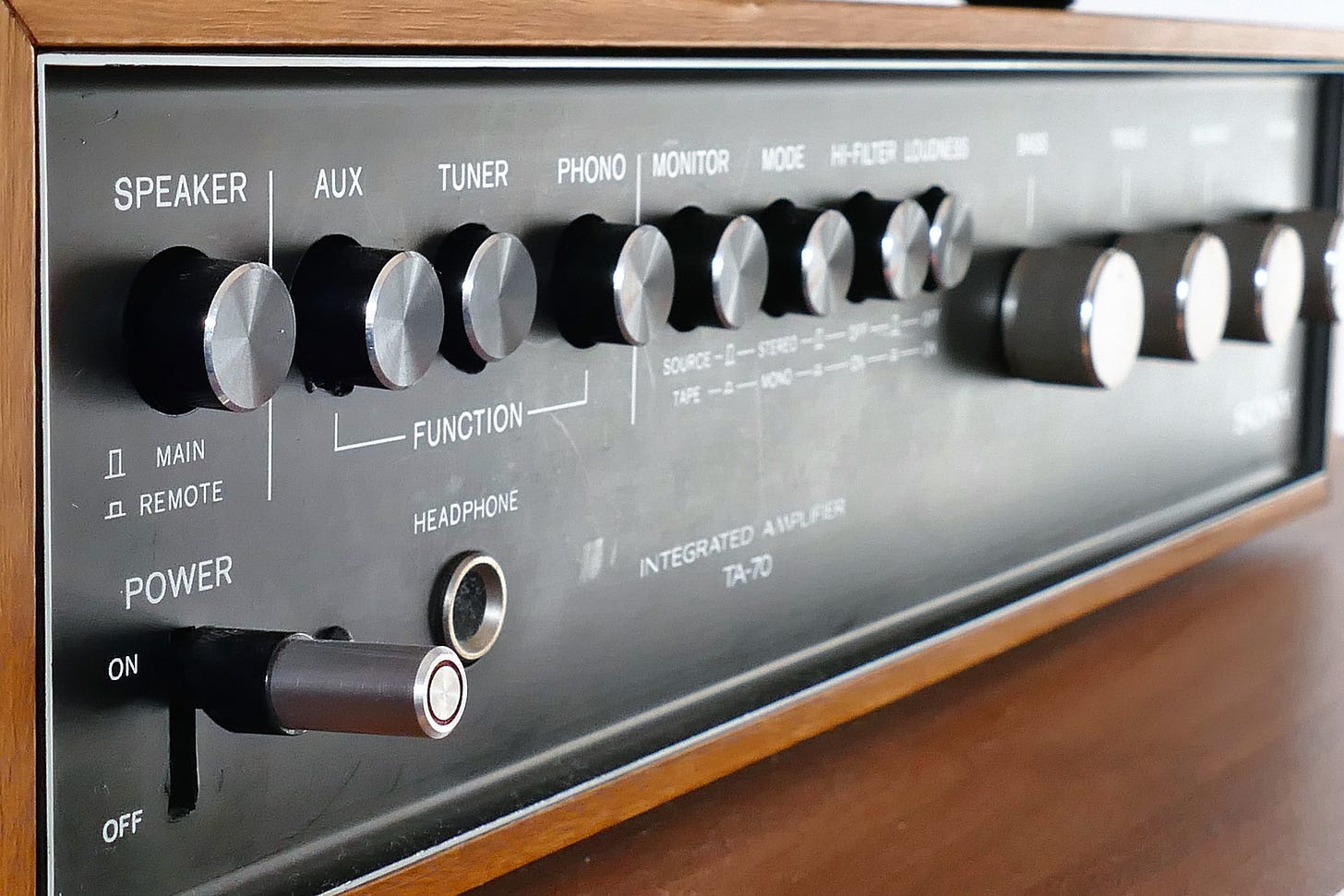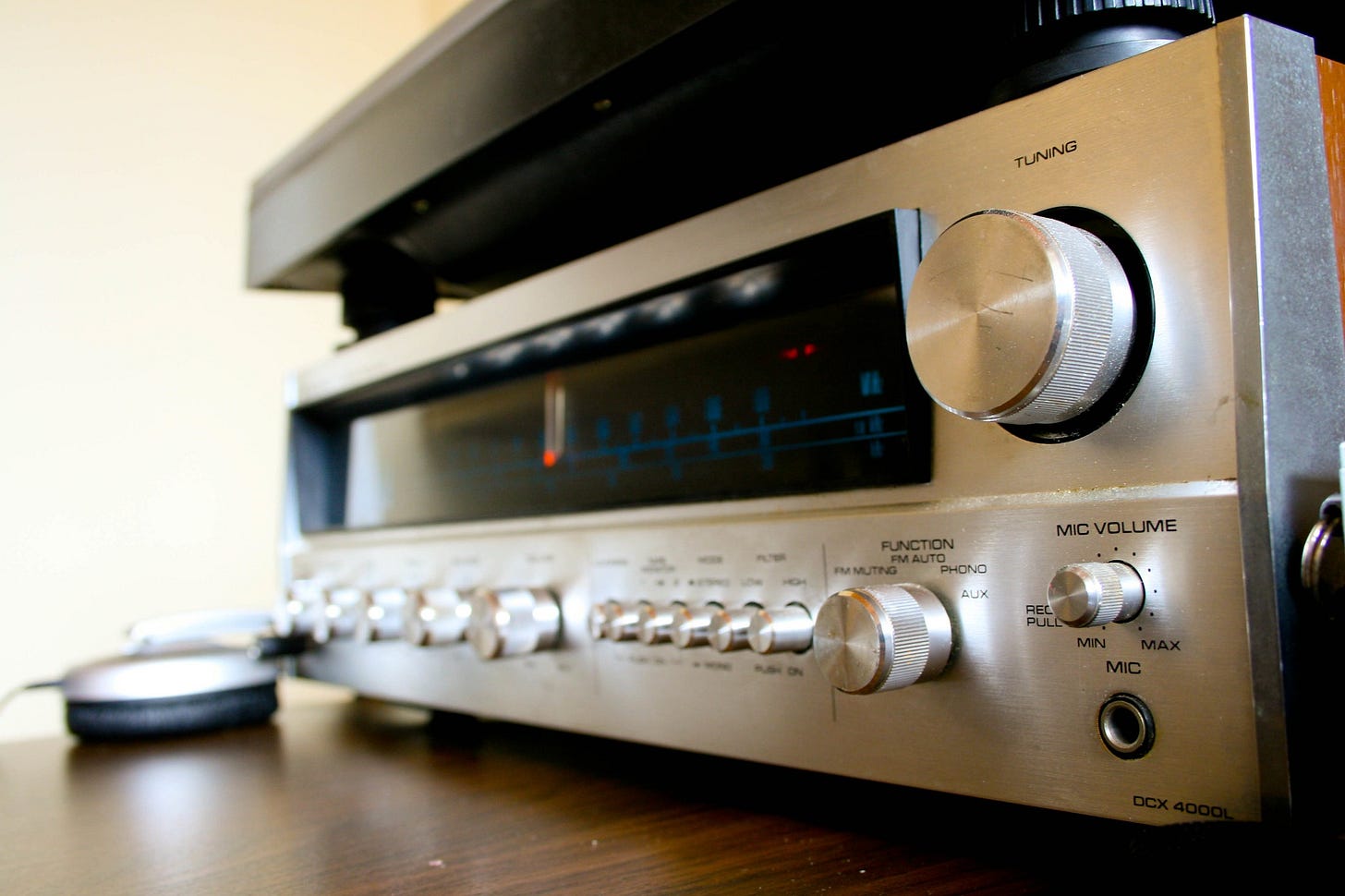What to Look for in a Phono Amp
There are virtually endless choices. The best first step is to figure out exactly what you need. That will help…A little
Photo: Inspiredimages_s6 via Instagram
Amplifiers are a make or break element of your system. Here is some insight on what to look for and a link to a piece that provides pros and cons for five amps.
Shopping for a amplifier that will deliver the best sound quality is tricky because there are so many available. To the untrained (or lightly trained) eye they are complex and perhaps even mysterious pieces of equipment. Without a degree from MIT, it’s difficult to determine which is the best value for a set amount of money. In fact, it can even be difficult to understand precisely what you need.
Click here to jump over to The Daily Music Break for information on amplifiers from Yamaha, Denon, Cambridge, Fosi and KEiiD
Yes, it’s possible to compare specs and up with the best amplifier to play your vinyl records with optimal sound quality. But even that approach comes up a bit short.
An amplifier for a turntable has a spec list as long as your right arm (as a detective in a crime drama would say of a suspect’s rap sheet). Which specs are important? Which are “nice-to-haves?” Which are marginal or irrelevant? And within each spec, how exactly do the numbers and percentages translate into real world performance? The smart thing is to zero in on the key properties of the device and compare them in a way that bypasses numbers and percentages as much as possible.
One thing to keep in mind is the difference between amplifiers and integrated amplifiers. An integrated amplifier contains the power amplifier, the prem-amp and some controls. An amplifier is just the power amplifier. The two terms are so close that they are unlikely to be used with much precision.
Where those numbers and percentages are needed — for instance in finding power and frequently response–do a quick dive to get a rudimentary understanding of what each means. (Here is a look at power and frequency response, courtesy of SoundGuys and Crown Audio, respectively)
Amplifier purchase decisions should not be the product of inscrutable high-tech measurements that only an audiophile understands. These measures exist and have value and are great for the folks who enjoy digging deep. In the real worlds of most of us, however, things to think about are pretty relatable items: Is the amplifier is compatible with the rest of the home audio system? Does it physically fits into the space where it will sit? Does it have proper phono input? Will look cool as it plays your vinyl records? And, of course: How does it sound?
Scat Records has a nice rundown of what to look for in an stereo amplifier. They point to five elements as must-haves: built-in preamp/phono input; Bluetooth connectivity; tone control; power and speaker pair-ability.
Photo: Filipe Garcia via Flickr
The first is of particular note here. Obviously, since our main concern is vinyl and analog, we heartily endorse the idea that looking for a dedicated input for a built-in phono preamp (which also is called a phono stage) is a must-have. You must also know how to look to see if you need a preamp. Putting the first record on your new setup and only hearing a whisper of sound is a disappointment best avoided.
The others go almost without mention (but I will). The value of Bluetooth connectivity is obvious. Tone control and power also are table stakes. Speaker-pairability — somebody must come up with a better descriptor — is important to mention here. It’s a big deal. The ability of an amp to play nicely with a wide range of speakers may fall not get much attention while shopping. It shouldn’t.
Why the Big Price Gap?
One of the interesting things about the world of amplifiers is that the range of prices seems bigger than in other categories. Of course, all elements of a stereo system — indeed, anything that has a price tag on it — have a range of costs. Good sound quality has a price, and poor audio can save a lot. But the disparity in the amplifier category takes this to the extreme. It almost seems that completely distinct product categories are being compared. Prices go from far less than $100 to far more than $1,000. That is quite a window.
There seems to be no single reason that the gap is so large. There of course are the usual technical differences that make some devices top shelf and others not. Important factors that related to price are the amount of power and impedance, the frequency range and total harmonic distortion ratings.
Prices also are determined by exactly what is included. Home theater amplifiers are different than home audio. This can lead to tedious discussions of how vendors and retailers label their products. There are differences between a power amplifier, an AV receiver and an integrated amplifier (not to mention pre-amps, which are sort of the remora fish of stereo equipment). A savvy shopper is should be familiar with the basic differences and not be tricked into buying a lot of functionality that they don’t need.
This site will go deeper into those definitions in the future. The main point is that how much functionality is squeezed into one unit clearly influences price. The best advice is to make sure that what you are buying does what you want it to — and that you are not paying for a lot of functionality you don’t need.
And, finally, expensive equipment is just better put together. This is a very important topic in electronics. One example: Advances in material sciences and fabrication processes are enabling transistors and other elements to be put closer and closer together. That is why devices grow ever smaller. (Check out the “portable” phone in the movie “Wall Street,” which was released in 1987. It’s funny now, but must it have seemed so cool then that Michael Douglas could talk while walking on the beach.)
The closer these elements are together, the harder the task for the non-conductive materials that are designed to keep the signals staying in the own lane, literally and figuratively. Extra shielding is necessary, and interference occurs if this is done poorly. This is a good example of the kind of care that goes into higher quality electronic equipment.
In a sense, no part of a stereo setup is more important than any other simply because each one has the potential to limit or ruin performance. That said, the amplifier is vital. Your choice can result in a system with great sound quality with expansion options or one that is limited both in quality and flexibility. In some things, a little knowledge is a dangerous thing. In amplifiers, a little knowledge is just what the doctor ordered.
There are a lot of Amplifiers to Choose from. The Best Advice is to Educate Yourself
There is no one most important or weakest important element of a traditional stereo system. That simply because each is a link in a chain that hopefully leads to good sound quality. A failure or under performance at one point is just as debilitating as a failure or under-performance at another. Vinyl albums full of gunk (that’s a technical term for, well, gunk) means that the vibrations and resulting current being created by the diamond needle traveling through the grooves will be inaccurate. Bad performance by the preamp on those tiny currents also kills performance. And on and on, up the line.
That said, the choice of amplifier requires special attention. For one thing, the similarity in describing the various attributes in the overall category — power amp, phono stage/preamp, integrated amp — relate to real and significant differences in functions. But they tend to blend together. This haziness may be on the part of consumer, the vendors trying to make their products seem as broad as possible or both.
On top of this — as mentioned above — is that there is quite a gulf in the pricing. It is important to keep some things in mind: It’s easy to pay for functionality that you don’t use, it’s easy to overlook elements that really will come in handy (such as Bluetooth capabilities) and that how well the products are constructed really is very important.
At the end of the day, integrated amps (devices containing both preamps and power amps) simply do more things than other elements of the system. Turntables turn the records and make sure the cartridge is positioned correctly. Speakers reproduce the signals sent to them. Amplifiers, however, are responsible for boosting the signals, controlling tone, connecting to peripheral devices such as tuners and really are the main interface between the system and the human.
It’s a Wrap: 5 Tips on Shopping for Amplifiers
– Determine if you need a preamp. It may be in the turntable
– Is it powerful enough and compatible with the speakers?
– Think carefully about what for you are (must have) core requirements and (nice to have) bells and whistles
– Amplifiers optimized for phono use and those for broader home theater setups are different purchases
– Do you want the stereo amplifier to control speakers in multiple rooms?





